by Luke Chandler
Synopsis: The discovery of massive destruction with numerous skeletons at biblical Azekah shows a stunning disaster hidden under the soil for thousands of years.
The city of Azekah sat on a prominent mountain in Canaan’s foothills (the “Shephelah”). Like a sentinel, it watched Judah’s ancient border with the Philistines and sat as a witness to some significant biblical events.
Canaanite Azekah witnessed Joshua’s “Long Day” battle against a coalition of other Canaanite cities. “The LORD threw them into a panic before Israel, who struck them with a great blow at Gibeon. . . And as they fled. . . the LORD threw down large stones from heaven on them as far as Azekah, and they died” (Josh. 10:10-11, ESV). After the Conquest, Azekah and its territory were allotted to the tribe of Judah (Josh. 15:20, 35).
Azekah later witnessed David’s battle against Goliath. “The Philistines gathered their armies for battle. . . and encamped between Socoh and Azekah” (1 Sam. 17:1). The road to Gath, on which the Philistines fled after Goliath’s death, ran directly by Azekah. Looking at the accompanying photo in this article, perhaps we can imagine the Philistines fleeing around the right side of Azekah’s hill with Israel in pursuit.
Little more is said about Azekah in the Bible. We know it was fortified by Rehoboam (2 Chron. 11:5-9) and reinhabited after the Exile (Neh. 11:30), but we have only bits of its history in Scripture.
Archaeology helps us to fill in some of Azekah’s history. A fragmentary inscription found in Nineveh mentions a conquest of the city in the 8th century BC. An Assyrian king, probably Sargon II but possibly Sennacherib, described its defenses in striking terms.
The city of Azekah is a stronghold which is situated in the midst of the mountains, located on a mountain range like a pointed dagger, it was like an eagle’s nest and rivaled the highest mountains and was inaccessible even for the siege ramps and for approaching with battering rams it was too strong.
Despite Azekah’s great strength, the Assyrian king went on to note that he took it anyway. Jeremiah reveals the site was reinhabited and eventually attacked by Babylon during the Kingdom of Judah’s last days in the early 6th century BC.
Jeremiah the prophet spoke all these words to Zedekiah king of Judah, in Jerusalem, when the army of the king of Babylon was fighting against Jerusalem and against all the cities of Judah that were left, Lachish and Azekah, for these were the only fortified cities of Judah that remained (Jer. 34:6-7).
A set of inscribed clay tablets discovered at the city of Lachish mentions Azekah during the Babylonian invasion. These “Lachish Letters” were military dispatches from Jerusalem during that war. Tablet #4 says, “May my Lord know that we are watching for the signal fires of Lachish. . . because we cannot see Azekah.” In other words, Azekah’s signal fires had gone out, indicating the city had fallen. Compared with Jeremiah 34 above, we know this message was written shortly after the situation in verses 6-7.
New excavations at Azekah that began in 2012 found the Assyrian siege ramp erected against the city. Excavators also found occupation levels from the Hellenistic (Greek) and Roman periods. Still, the most interesting discovery is a previously unknown destruction from the time of the Judges in the 12th century BC. Everywhere excavators dig, they find a massive destruction layer complete with skeletons in death poses. This stunning find has been dubbed Israel’s “mini-Pompeii” by the excavators.
Azekah’s disaster coincides with a general collapse of civilization throughout the Ancient Near East in the 12th century BC. We see indications of general disorder in the book of Judges, especially when contrasted with the greater stability of Abraham’s time. In Azekah’s case, the victims of destruction were Canaanites. The attackers are unknown to us, though the Philistines are a possibility. Azekah’s destruction was so complete that no one came to bury the dead. The ruins lay abandoned for many years until the Kingdom of Judah rebuilt the site. Judah’s new buildings and fortifications buried Canaanite Azekah and its skeletons for thousands of years until excavations revealed the forgotten disaster to the world.
Na’aman, Nadav, trans.“Sennacherib’s ‘Letter to God’ on his Campaign to Judah.” Bulletin of the American Schools of Oriental Research (BASOR) 214 (1974): 25-39.
Torczyner, H. et al. Lachish I, The Lachish Letters. London: Oxford University Press, 1938.
“Azekah.” Wikimedia Foundation April 13, 2021. https://en.wikipedia.org/wiki/Azekah.
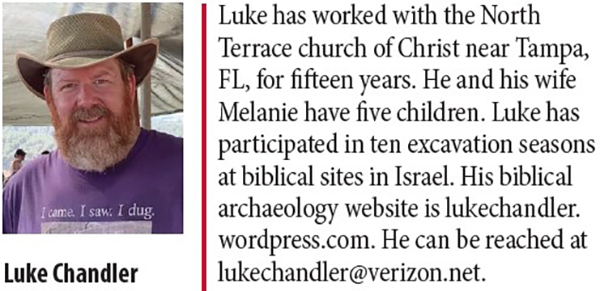
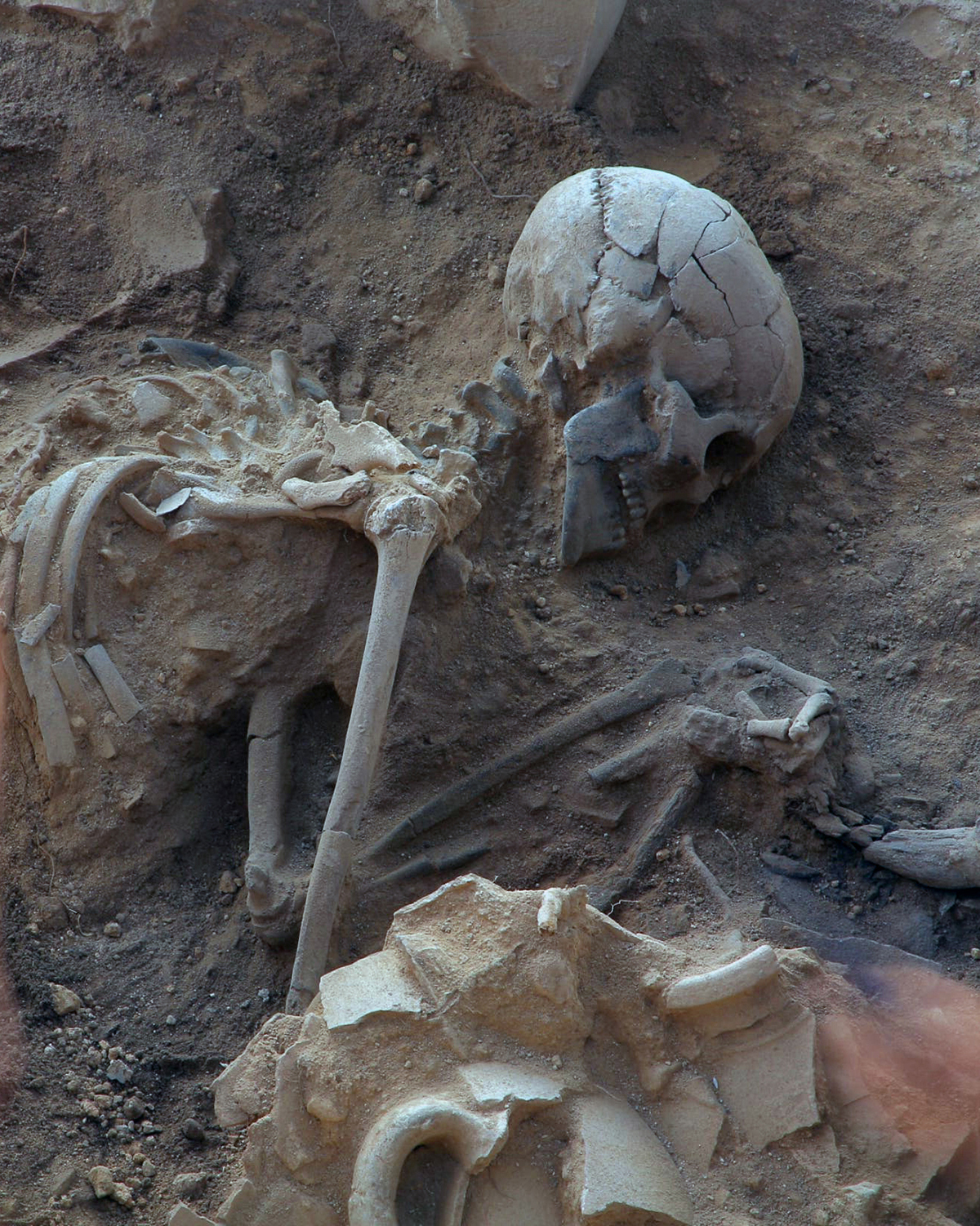
Image-1 Caption: Remains of the young woman found at Azekah © Haarezet Image 1639184921
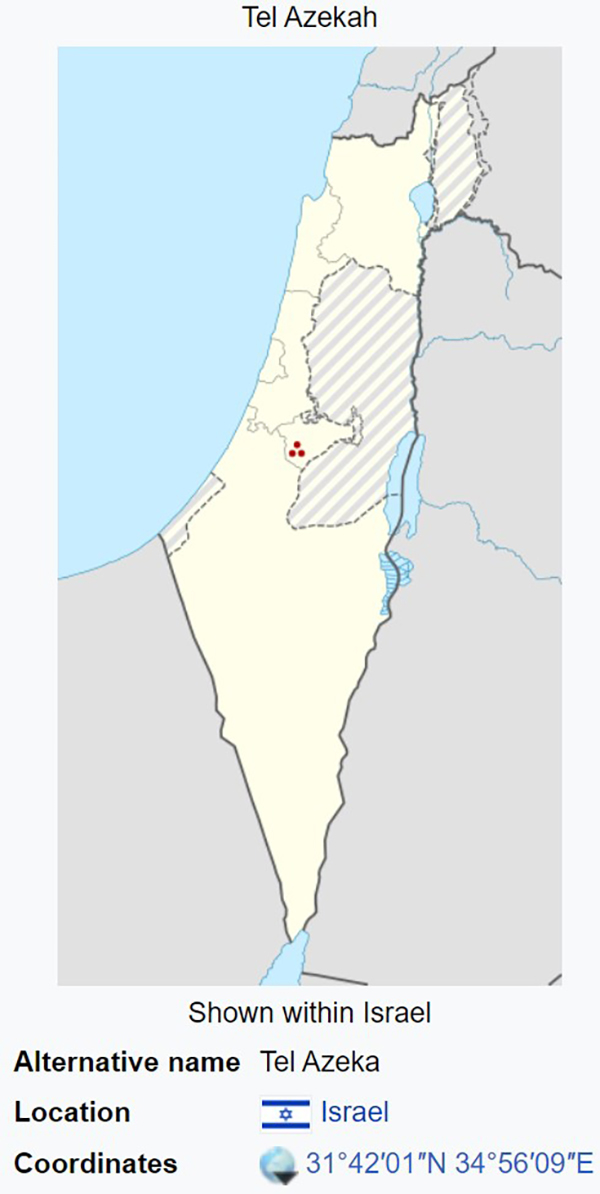
Image-2 Caption: Map showing location of Tel Azeka in modern Israel © Wikipedia Foundation
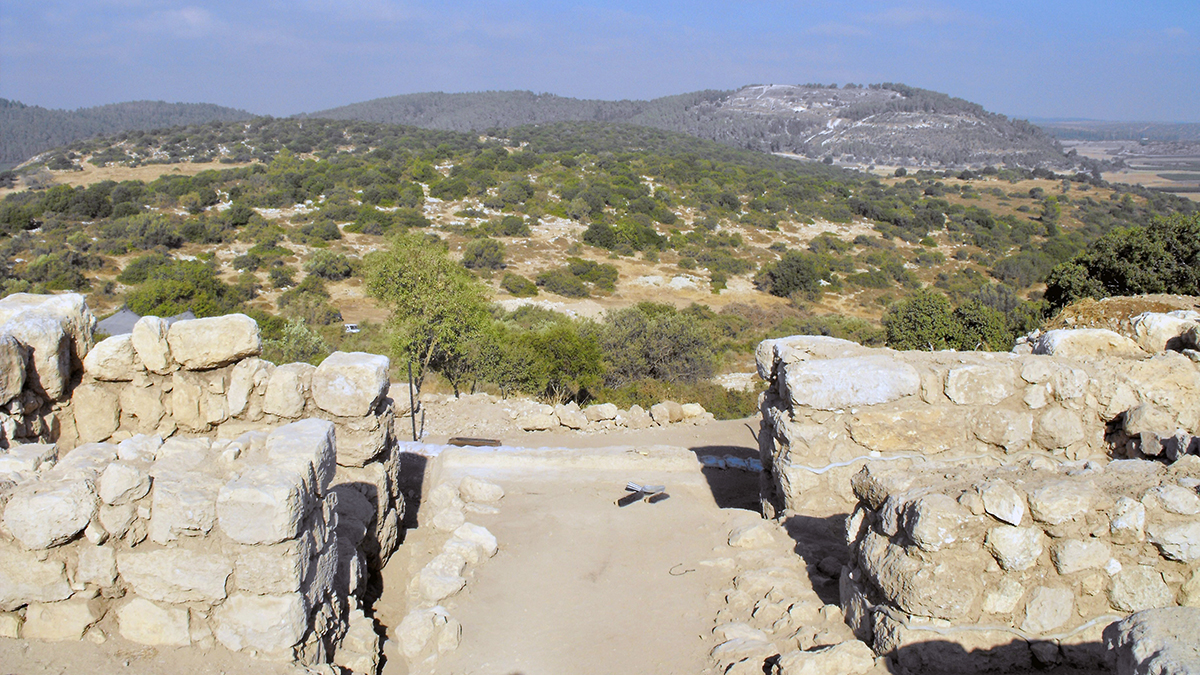
Image-3 Caption: Photograph from Azekah looking across the valley where Luke worked for several years.
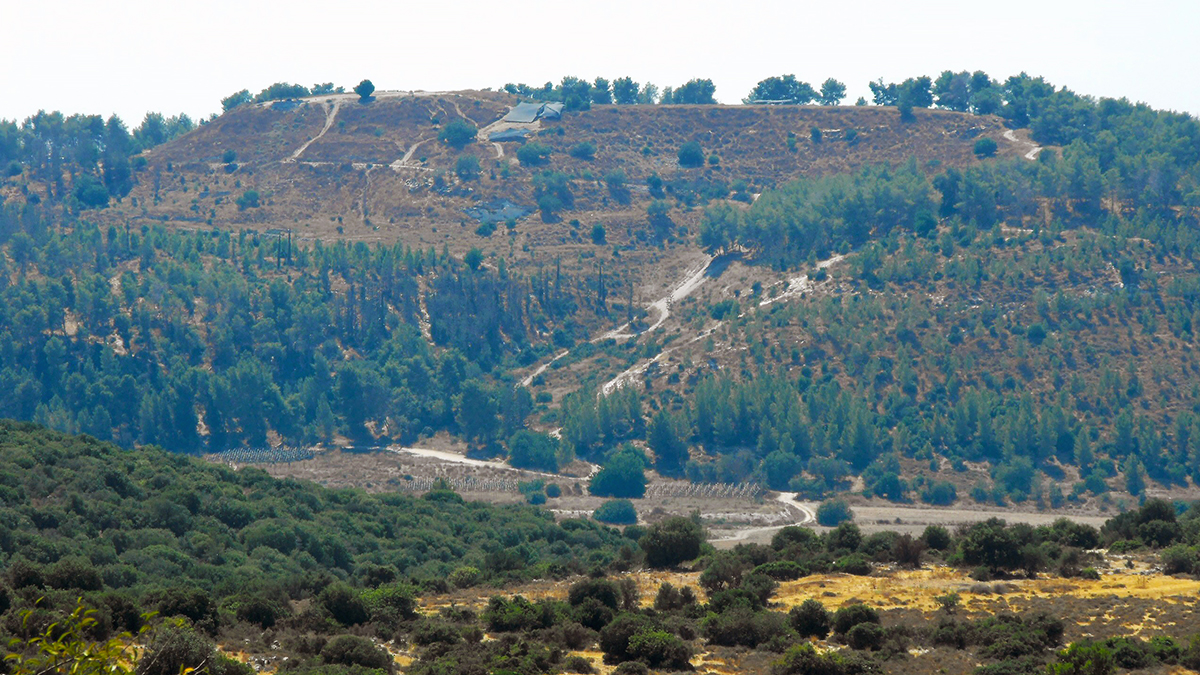
Image-4 Caption: Excavation tents at Azekah from the first week of new excavations in 2012

